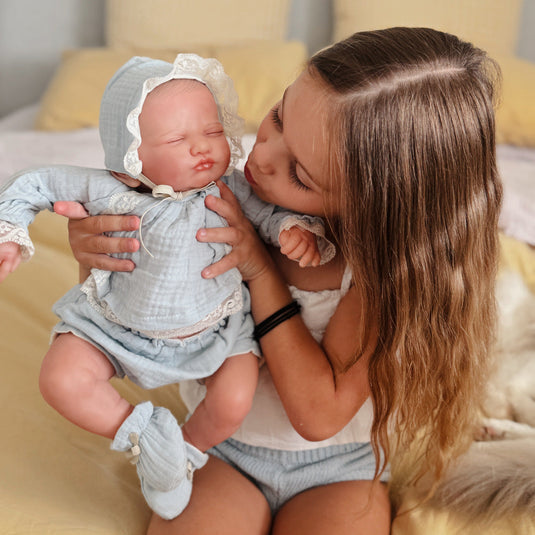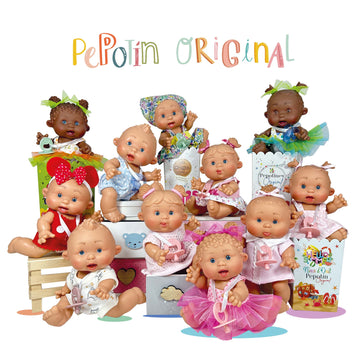The 5-Minute Rule for Dolls And Accessories
The 5-Minute Rule for Dolls And Accessories
Blog Article
Our Dolls And Accessories Ideas
Table of ContentsDolls And Accessories - QuestionsA Biased View of Dolls And AccessoriesOur Dolls And Accessories StatementsThe Basic Principles Of Dolls And Accessories Top Guidelines Of Dolls And AccessoriesExamine This Report on Dolls And AccessoriesSome Known Details About Dolls And Accessories
When dolls are included in group play, youngsters exercise waiting, sharing, and paying attention to others' concepts. Whether they're acting to be a moms and dad, brother or sister, or friend, kids learn just how partnerships workhow to sustain others, fix arguments, and take care of someone else. These early role-play experiences become the foundation for healthy and balanced relationships and partnerships later on in life.Duplicating comforting routines with a doll (feeding, shaking, closing) can help children really feel tranquil and protected. These relaxing routines instruct them exactly how to self-regulate. Taking treatment of a doll can make a youngster feel qualified and certain - european dolls. It provides them a sense of duty and control in a globe that typically really feels unforeseeable.
The Ultimate Guide To Dolls And Accessories
When kids see dolls that reflect their race, heritage, and society, it reinforces a positive sense of identification. It claims, "You belong. Your tale issues." Dolls additionally present kids to cultures outside their very own, developing considerate curiosity and compassion for others. This is where inclusive play can bring about comprehensive areas.
As Dr. Karyn Purvis, a leader in kid development and trauma-informed care, as soon as said: This effective quote highlights exactly how play isn't just funit's exactly how youngsters discover ideal. The mind wires itself through rep. But when a youngster is involved, joyful, and mentally linked to an activitylike doll playthe brain reinforces those links quicker and much more meaningfully.
What Does Dolls And Accessories Do?

Young boys need compassion, kindness, and imagination tooand doll play provides that. Dolls are often a kid's very first "good friend," helping them exercise partnerships, construct interaction skills, and feel comforted.
Unknown Facts About Dolls And Accessories
Through play. Through pride. With dolls that matter. Thanks for joining us on this journey. Samantha Ong Samantha Ong is the founder of Joeydolls, a Canadian-based toy brand on a goal to celebrate Eastern cultures Click This Link via happy, comprehensive play. Inspired by her very own experiences growing up without social representation, Samantha creates dolls that help youngsters feel pleased with that they are while stimulating inquisitiveness and empathy in others.
Playing with dolls motivates children to chat even more concerning others' ideas and feelings, a study has found. The research study suggests that playing imaginary video games with dolls can assist youngsters develop social skills, concept of mind and compassion.
Some Of Dolls And Accessories
They were also most likely to attend to the dolls in the second person, chatting to them directly, whereas the characters on the computer display they had a tendency to refer to in the 3rd person. No difference was observed in between kids and women."Interior state language can suggest that a child is thinking concerning other individuals's ideas and feelings while playing with dolls," claimed Gerson.
And that they see language usage in this regard is good verification of the theory."Mardell added that the findings ought to use to any type of kind of role-play toy, instead than being certain to Barbies."Kid usually begin to reveal indications of interior state language around the age of 4.
What Does Dolls And Accessories Do?
"It comes to be vital for making and sustaining friendships, and how they learn from their teachers, and parents."The research also discovered that the kids had actually boosted mind activity in the posterior exceptional temporal sulcus (pSTS) area when they talked as though their dolls had ideas and feelings. The pSTS area is thought to be included in the development of social and psychological processing skills.
Childhood is not a static life phase; undoubtedly, the interpretation, significance and understanding of youth are all subject to adjustment. By the 19th century among one of the most extensive changes was the significance positioned on allowing children to experience "the care free pleasures" of youth with playtime tasks. Play was now thought about to be a critical element of a good youth.
In order to fully recognize the significance of play, one need to likewise understand the relevance of the doll. Dolls are much even more than playthings made to delight young ladies. During the 19th century appropriate playtime activities were selected to promote intellectual, physical or emotional growth. Dolls were specifically prominent since they were assumed to foster and support feminine top qualities such as generosity, caring and empathy.
Dolls And Accessories for Beginners

It is just via historical investigations that researchers can want to reveal and record the complete series of play experiences. Chronicling these experiences, and specifically the duty of dolls, is crucial for providing a much more total photo of childhood throughout the 19th century. Alarcn, Sara E - european dolls., "Child's Play: The Role of Dolls in 19th Century Childhood" (2007 )
Report this page